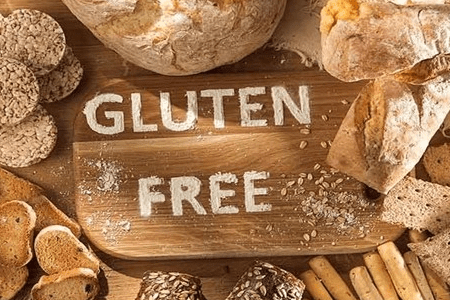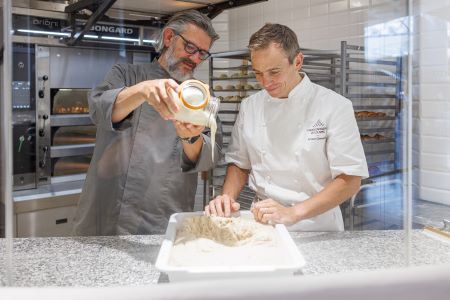We explore the innovations, challenges, and strategies shaping the future of bakery packaging with CAMA Group, from automated changeovers to smart robotics and eco-friendly materials
The bakery sector is seeing a surge in demand for smaller portion sizes, convenience, and online shopping. How are these trends reshaping packaging requirements, and what challenges do they present for bakery manufacturers?
There are two main challenges being brought by these trends: packaging speeds and time to market. If a line was designed for a certain range of sizes and packing speeds, reducing portions means increasing the number of packs to be managed. This requires higher performances in feeding systems and loaders. A modular approach to machine design at the early stage of the project allows for a future-proofing scenario, meaning, for example, that an extra loader or function can be added to an existing packaging system at a latter stage. The second challenge is time to market. Machine manufacturers need to be fast in providing upgrades to existing machinery, as marketing campaigns in supermarket chains have got fixed slot that cannot be missed. A structured approach in the technical files of the original supply allows for a more efficient process of design, manufacturing and installation of size parts, especially if in conjunction with a structured department that has a team of skilled people, dedicated to this kind of activity.
For bakery producers adapting to changing packaging formats, vertical start-up efficiency is critical. How can manufacturers achieve a smooth transition when implementing new packaging solutions?
While approaching the purchase of new capital equipment, it is strategic to share with the equipment supplier the bigger picture. This means getting all stakeholders involved since day one, in this case especially marketing and sales, to include a range of immediately needed packaging formats but also of possible future ones. Such information allows the equipment supplier to design a packaging system that is future-proof. When the need for new sizes, most of the times smaller and thus faster, comes into the picture, the whole system has already been prepared in advance. When the time to commission a new size comes, a vertical start-up is achieved as all the hardware was already predisposed for it. It this approach is not feasible, vertical start-up can be achieved by performing a proof of principle with the OEM but also by deeply involving the packaging department of the OEM (for those who have it available and structured), so that the design of the packaging to be made is optimised also for the type of machine and packaging process of the specific production line.
What innovations or technologies ensure quick, seamless size changeovers without disrupting production efficiency?
The advent of electronically-driven machines opened up a huge spectrum of options to make machine changeovers seamless, tool-less and with extremely limited timing requirements. Position drives, RFID devices, servodrives are all part of the equation.
Nowadays we see casepackers having almost a fully automated changeover, made by the simple change of a recipe on the HMI of the machine. This reduces mistakes, makes changeovers replicable and reduces also the efforts operators are required. Let me make a couple of examples. If there is a need to move glue guns in a certain, specific position, in the old days an operator had to wear special gloves and move them by hand. Glue guns are very hot, which is a threat for operator safety. New generation machines have step drives, which can perform the same task automatically and with a higher degree of accuracy. Another situation might be related to blanks’ magazines. Instead of having to replace parts of adjusting them, again by recalling a specific recipe the machine changes automatically, making it simple and replicable even for less experienced operators in the factory.
As retailers increasingly demand shelf-ready packaging, how do you see this impacting bakery manufacturers, and what role does automation play in ensuring compliance with retailer expectations?
We take it for granted in the supermarket, but shelf-ready packaging balances multiple features to deliver the best outcomes for suppliers, machine builders, producers, vendors, and consumers.
Packaging specialists must merge functionality, aesthetics, and sustainability into a design that ensures easy packaging, effortless unpacking, strong visual appeal, brand reinforcement, and optimal sustainability. It’s a science test, engineering project, art form, materials study, and marketing exercise combined.
But what makes good shelf-ready packaging? It’s not just what you see on the shelf—it’s machine builder expertise and packaging design aligned with advanced packaging technologies, all viewed holistically across the product and packaging lifecycle.
Development isn’t linear. Designers and suppliers must anticipate and address impacts across the value chain. A choice at one stage can significantly affect another, requiring careful consideration of every possibility.
From the outset, sustainability and material reduction must be prioritised. Will the packaging be reused or recycled? This determines material type and amount. Next, consider the product: shape, fragility, special requirements, and presentation all influence packaging design and technology.
Machine capabilities matter. Some products suit top-loading, others side-loading. Multi-flavour packs, bulk packaging, and buffering must be factored in. A supplier with a broad technology range ensures flexibility, avoiding compromises forced by limited machine options.
Palletisation is key. Does the packaging maximise layer count, nesting, and weight distribution? Can it be displayed on the pallet? More boxes per pallet lower logistics and fuel costs, enhancing sustainability.
At the supermarket, tear-offs must work flawlessly. Poorly designed boxes waste time and frustrate staff—issues retailers won’t hesitate to highlight.
A holistic approach must also account for operational and business needs, where data and connectivity are now essential.
Read more latest industry news and developments in our free to download magazine.
Never miss a story… Follow us on:
LinkedIn: International Bakery
X: @int_bakery
YouTube: @Bakery-TV
Media contact
Joseph Clarke
Editor, International Bakery
Tel: +44 (0) 1622 823 920
Email: editor@in-bakery.com






